Dimension 20: Neverafter is the fifteenth season of the popular Dungeons & Dragons series Dimension 20 from College Humor, and is available on Dropout.tv. The show stars Brian Murphy, Zac Oyama, Lou Wilson, Ally Beardsley, Emily Axford, Siobhan Thompson and Brennan Lee Mulligan. Neverafter brings a dark horror twist to the classic fairy tale stories we grew up loving.
SIGMA Ambassador Graham Sheldon explains how he was able to capture the magic, hilarity, and drama of the latest season from behind the camera.
Tell us about the set layout and the gear you were using.
The set is covered by five cameras and the cast of seven is surrounded on all sides by a dome made up of acrylic elements that allows projectors to display different effects such as rain or even magical illustrations on the walls surrounding the players. In terms of the camera setup, we’ve built the show around Blackmagic 6K and Canon C300 cameras mixed with a variety of SIGMA lenses such as the 18-35mm F1.8 DC HSM | Art, 24-70mm F2.8 DG OS HSM | Art, and the SIGMA CINE 50mm T1.5.
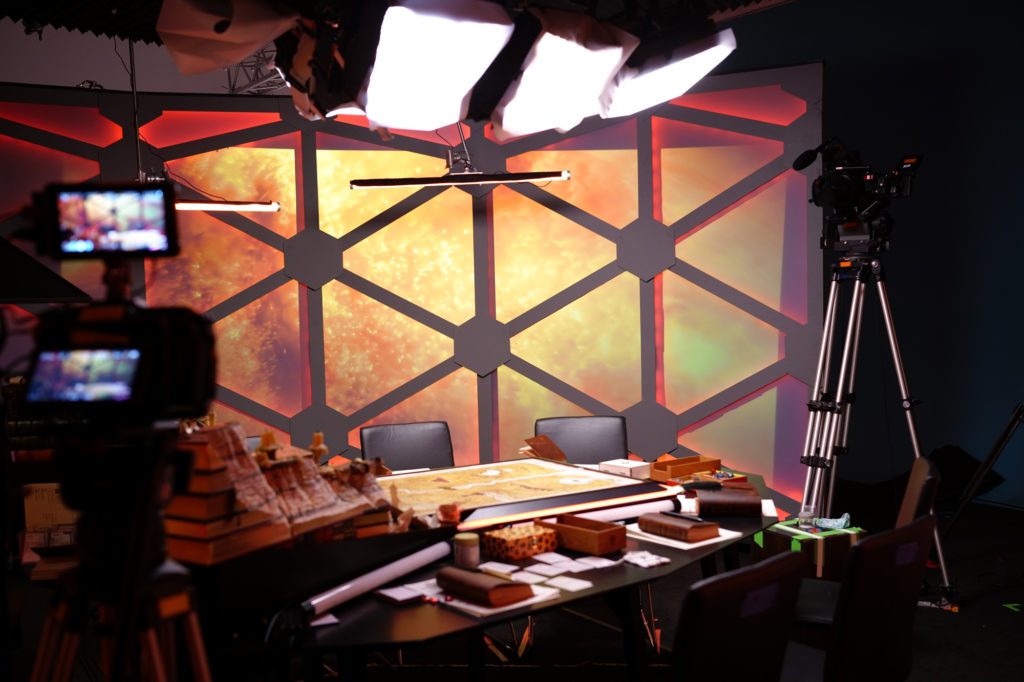
One of the hallmarks of the show is the beautiful sets and mini character constructions led by Production Designer Rick Perry. To capture those moments we have both an overhead Canon C300 paired with a SIGMA 18-35mm F1.8 DC HSM | Art and a side angle with a 24-70mm F2.8 DG OS HSM | Art. These shots are used in episodes occasionally, but they also give director Michael Schaubach a good view of the maps, so that he can capture specific close-up moments with the mini characters later that are then cut into the episodes.
The overhead camera relies on a Wooden Camera Accessory L bracket for safe mounting to the lighting grid, and the cast lighting itself is executed primarily by Astera Hydra lights, Nanlite PavoTubes 15X and 30X and Astra 6X and Gemini 1×1 fixtures, which are both Litepanels fixtures. Rosco E-Colour White diffusion softens all the key lights.
The Blackmagic 6K cameras help cover the core cast at ground level and the 6K resolution allows for a comfortable punch-in in post for HD delivery over Dropout.tv. One of the primary concerns with an extreme punch in like this (from a 3-shot to a single) is how soft the image could become, but SIGMA lenses in general have a reputation for being on the sharper side, and the neutral color of the SIGMA optics also made it easier for us to maintain bright and vibrant colors in the projection elements.
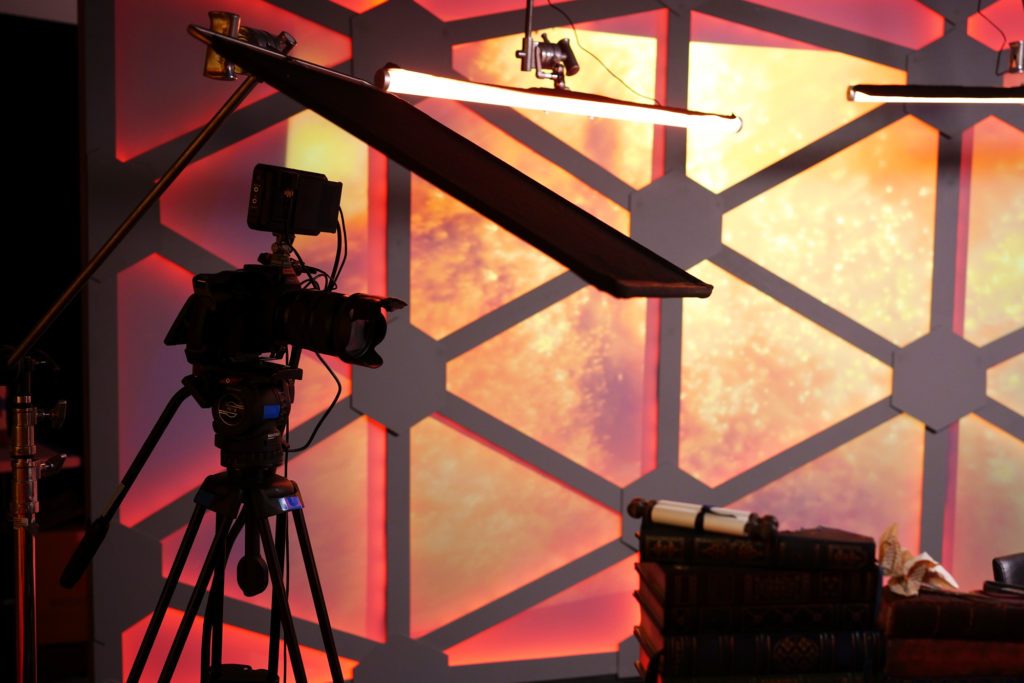
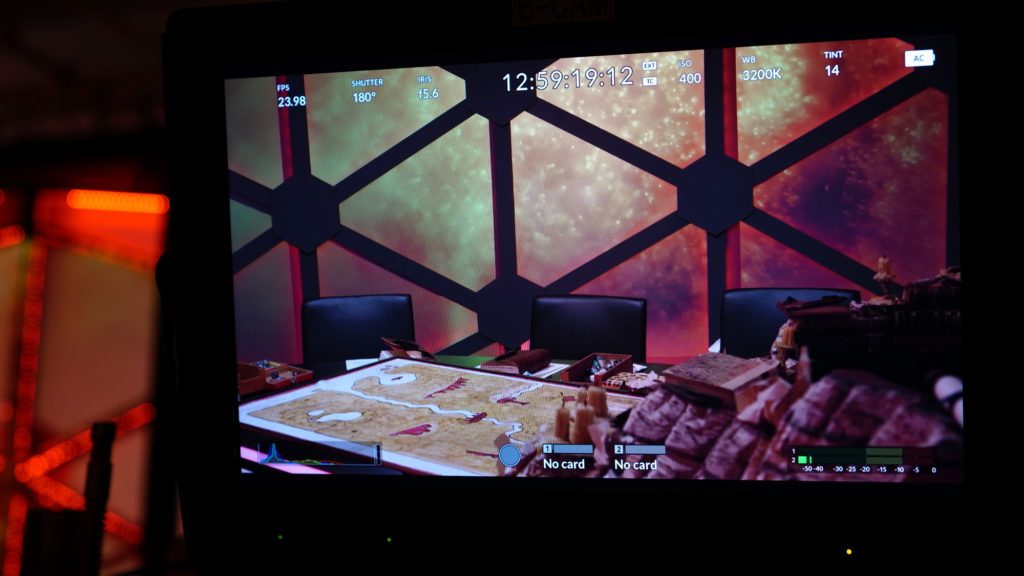
How did your SIGMA lenses help you to tell this story?
Our mix of the SIGMA 18-35mm F1.8 DC HSM | Art, 24-70mm F2.8 DG OS HSM | Art, and the SIGMA CINE 50mm T1.5 kept the footage sharp after the digital punch-in requirements and captured the gorgeous detail of the maps and D&D minis. Of course they all cut together seamlessly too, which is one of the aspects that always impresses me about SIGMA. You aren’t often able to mix DSLR glass with Cinema primes and have them play well together in this way.
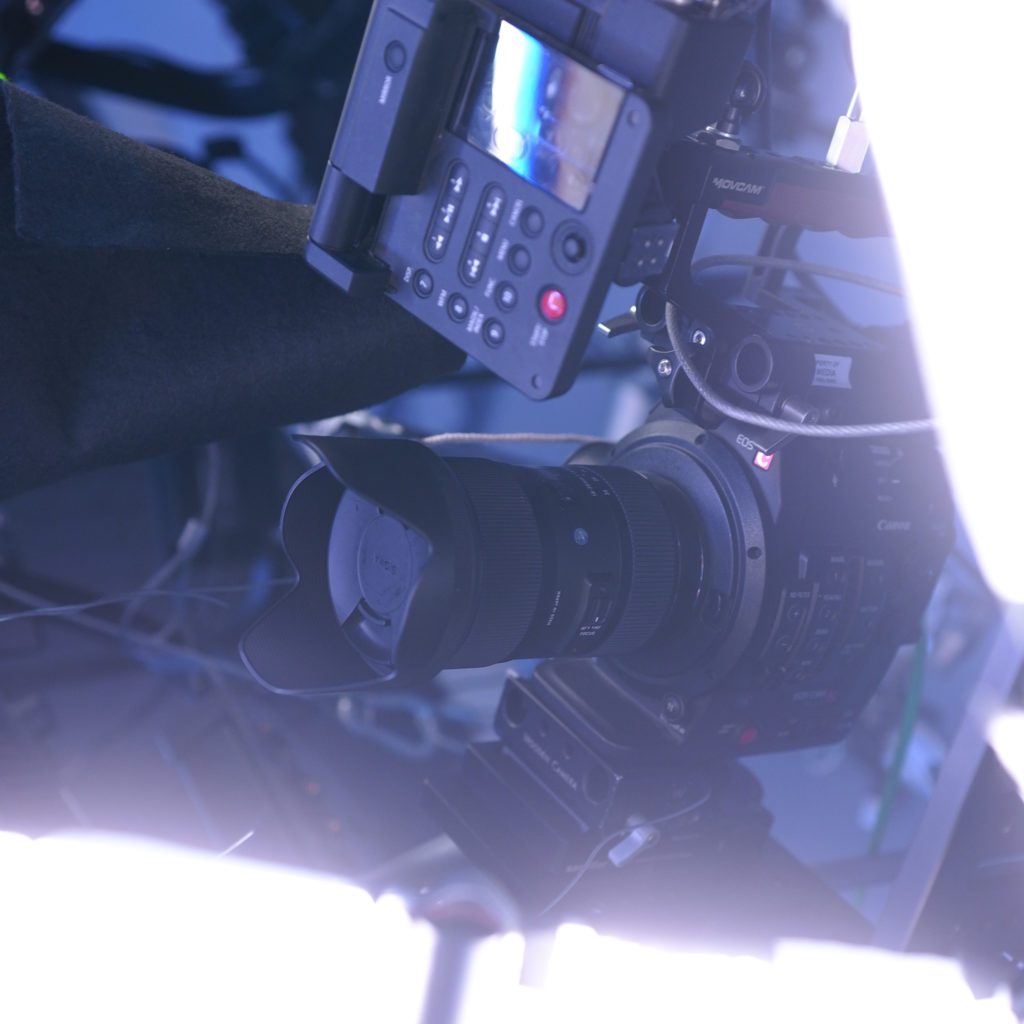


I also have always appreciated the build quality of SIGMA glass to the point where the zooms and aperture rings are smooth, and each lens feels like it can take a bump or two throughout the normal course of production. SIGMA glass helped bring a uniformly clean and sharp look to an exciting season of Dimension 20 where the cast travels into a land where the journey ahead is unclear and each path is dark and filled with peril.
What is it like to film a live improvised show without a chance for retakes?
There are moments (especially in the D20 Afterparty episodes) where things fly off the rails a bit in the best way, and that often requires a few of us to hop on additional cameras to follow the action. Keeping the Blackmagic 6K cameras in relatively wide 3-shots on the cast and having an operator following the host and dungeon master Brennan on a SIGMA CINE 50mm T1.5 prime means we tend not to miss moments. Also, Neverafter is one of, if not the longest, season of Dimension 20 ever filmed, so we get quite skilled at anticipating where a piece of action might be headed.
Of course with any long-running, multi-episode show there is a healthy amount of pre-planning that happens before the record button is ever hit and that gives everyone a good sense of where things might go, but the improvisational nature of this series guarantees that we all have to stay on our toes.
DP Kevin Stiller, responsible for many prior Dimension 20 episodes and seasons, also made sure that I didn’t come into season 15 completely blind and I was able to pick his brain often for best practices.
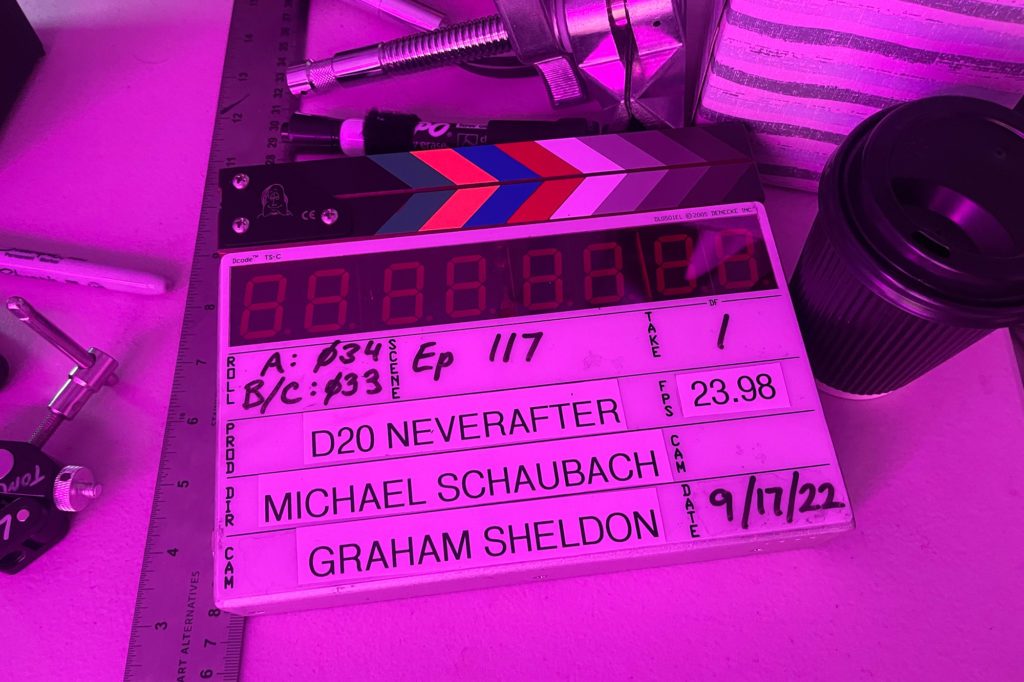
What was it like to film around a miniature set and how do you make it visually interesting from a storytelling perspective?
Again, I think many props (no pun intended) must be given here to Production Designer Rick Perry and Director Michael Schaubach for how they execute the minis themselves and then the filming of the mini insert moments. On this season, DP Kevin Stiller was able to shoot the mini closeups as a 2nd unit, occasionally while the main season was still filming in parallel. This meant we were really given the time from Production to give these fantastic mini sculptures their due.
During filming of a normal episode, our director is available to track moments in real time that might be a good insert moment later for the minis. These moments are carefully tracked and as many are included as budget and time allow.
I will say that the art team have outdone themselves this season and it isn’t hard to make any of these minis standout from a lighting or camera perspective as they are absolutely fantastic all by themselves. I can’t wait for audiences to see those.

Where can we watch Dimension 20: Neverafter?
The first episode premiers November 30, 2022 and you can watch it here.

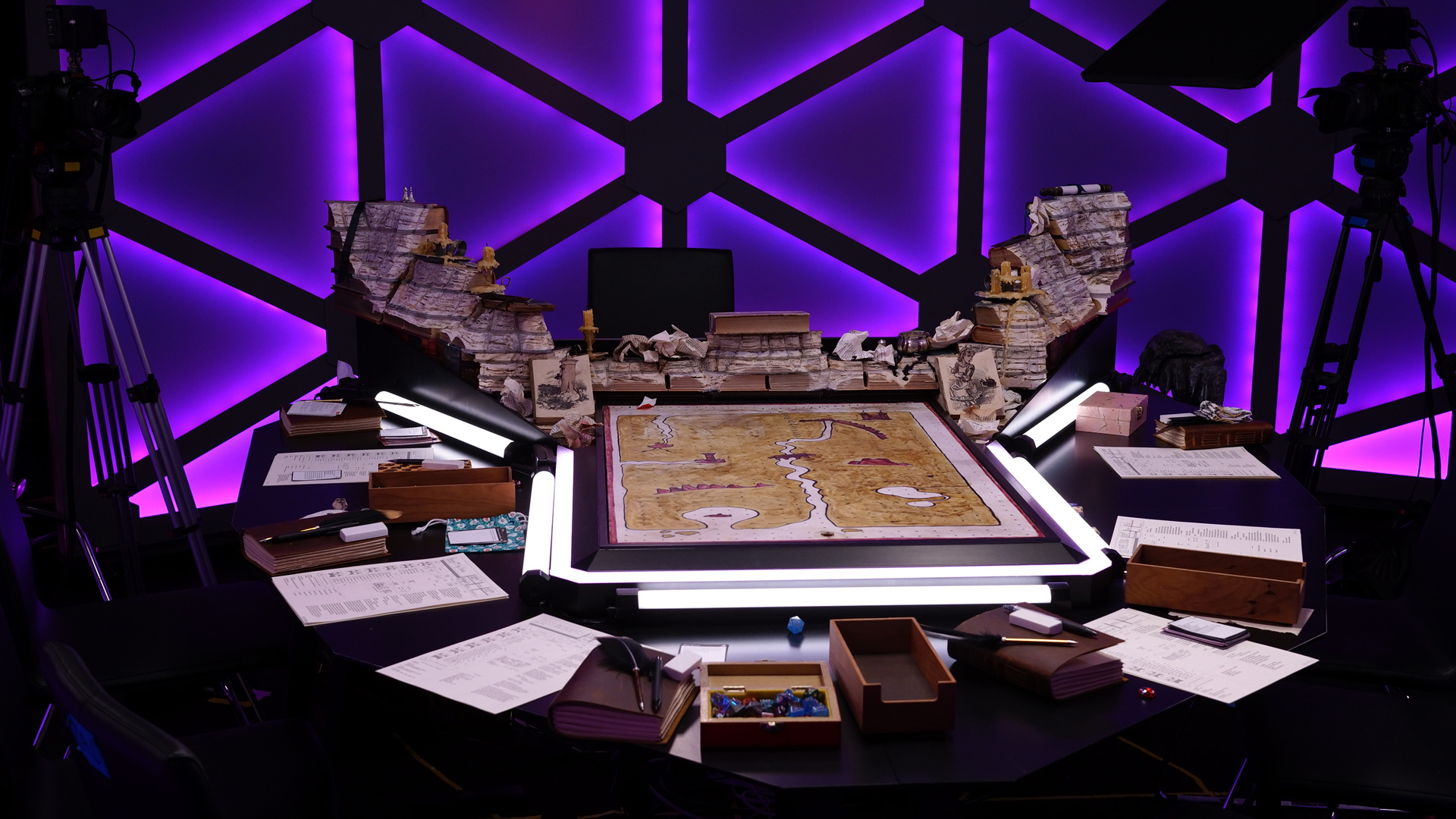
I saw the set (quickly) and read about the cameras and lenses (quickly again) in a hurry today.
This small set makes it an easy and fairly simple setup made perfect for the cinema and stills lenses of Sigma . Which are pretty close to the same …. anyway…. And of a high quality image and build . But also the BlackMagic cameras and the Canon C300 . Again Simple , small and great for this small set .
You can surround the area and people/person to be filmed and still have room for a mover or even maybe two .
I shoot live music (small) and large stages about the same just with different cameras. I use many of the same focal lengths on the small stages.